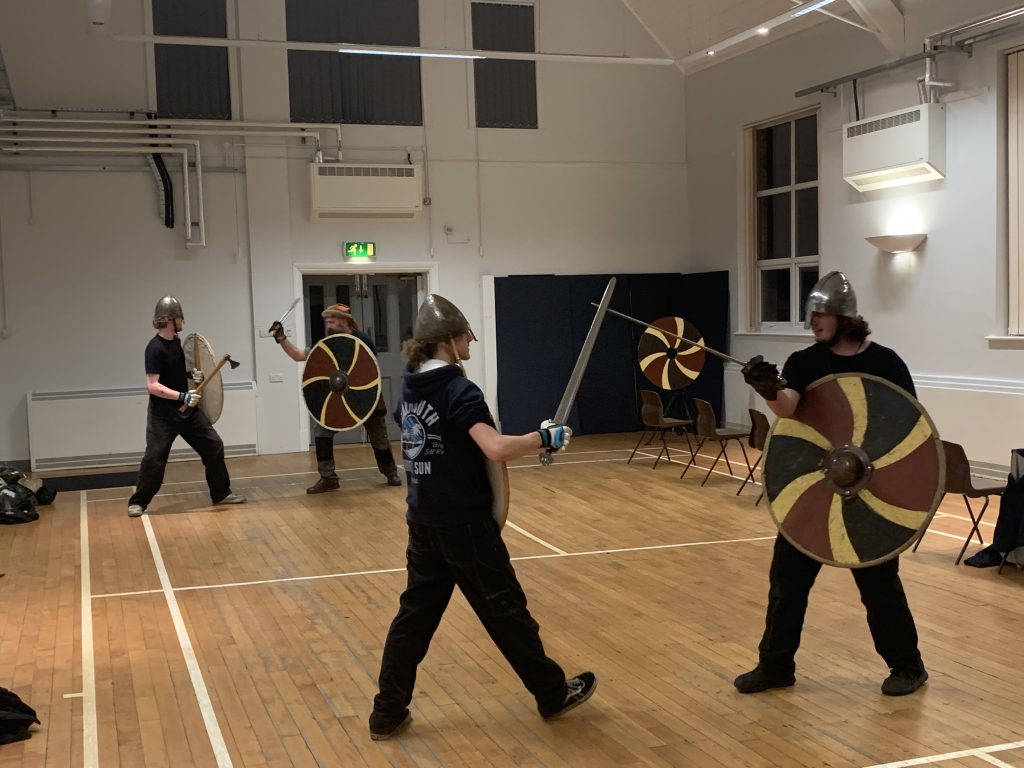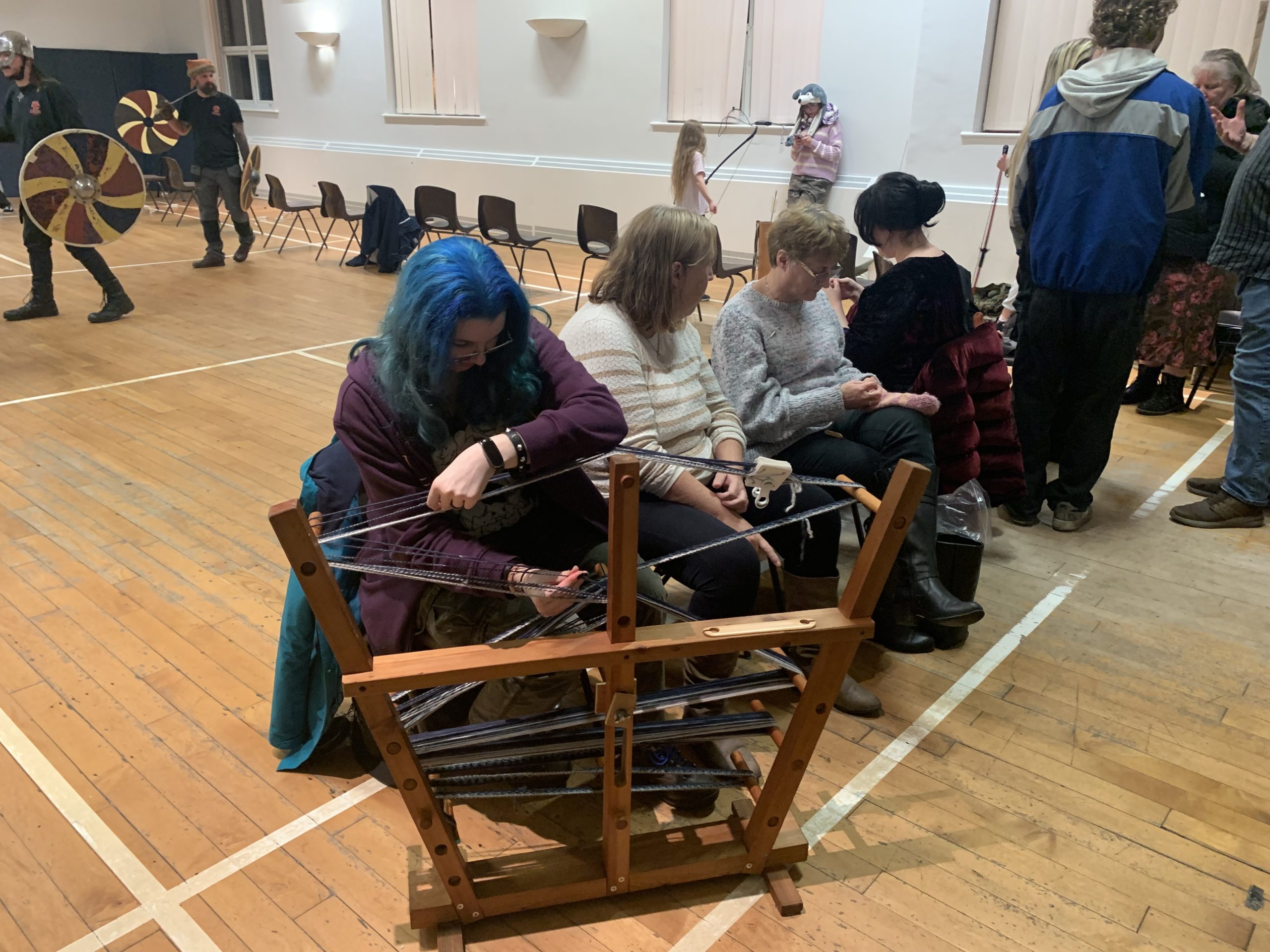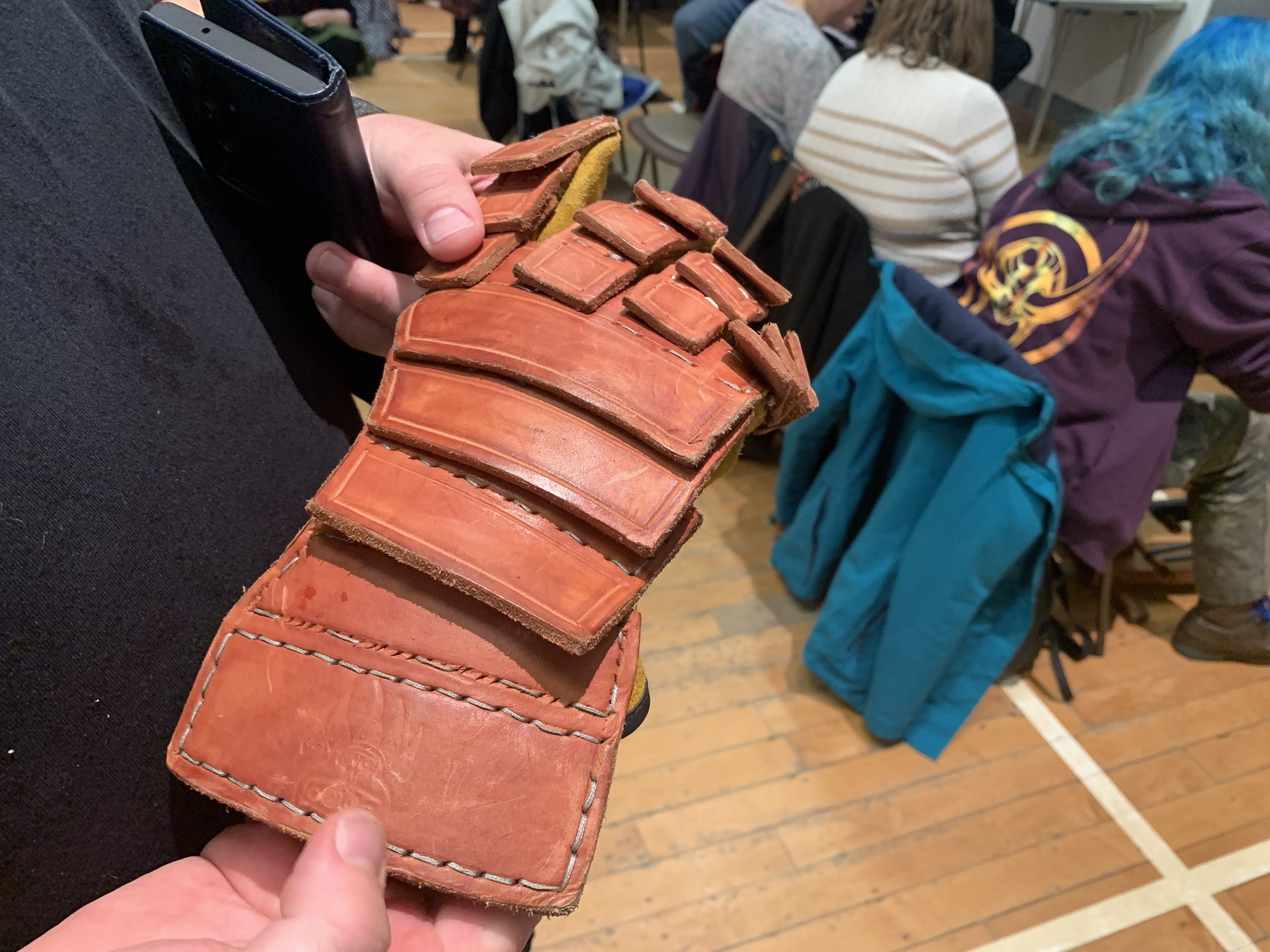
Over 1000 years ago, Vikings used to rule the lands we now call Salford. Whilst most of the traces of their existence have gone, a group from Worsley are keeping the Norse culture alive.
The Ydalir Vikings are the Salford and Manchester chapter of a national network of dark ages re-enactors. They re-enact battles and teach visitors how people in Britain lived during the time of the Danelaw, the name for the Danish occupation of the North of England.
The name Ydalir translates to Yew Dales, the land home to the Norse God of Winter, Ullr. The land was known to be eternally damp, reflecting the less than ideal weather of Salford.
Meeting in Beesley Green Community Centre every Tuesday night, the group train and practice combat skills and techniques for upcoming re-enactments.
Their Jarl, Neil Lucock, said his interest in historical re-enactment came from his daughter’s interest in a medieval signing group at Berkeley Castle.
He said: “There were people there swarming around in armour with cloaks and weapons, I didn’t know you could do this.
“I got my kit together and did Edward I for a few years, ran a Roman group as well, and then drifted that to Vikings and ended up the leader here.
“There’s a lot of interesting things you can learn, and everybody loves Vikings, they’re cool.”
The group partake in Reconstructive Archaeology, looking at items found in burials and recreating them using the methods they used, with some modern assistance.
Examples include creating small bags through the inside of tree bark and clothes pins made from brass.
Some members recreate tablet braids, originally weaved between trees, on a modern frame whilst maintaining their traditional patterns.

Neil continued: “It’s basically making you look good, it’s bling. A lot of Viking stuff is ‘I’m blingier than you because I’m richer.’
“It’s all of these things you can learn. We do cookery, we know what they eat because there’s archaeological evidence.
“We don’t have the recipes, but if you’ve got beans, pulses, garlic and carrots and a pot, you can guess that was a stew at some point. You can do a reasonably good approximation of what they eat. It’s trying to replicate samples of what the craft that people can do.”
Group spokesperson Matt Welch also focuses on dyeing clothing, making accurate protection to wear whilst in their recreation of battles.
Made from padded cricket and football gloves, he stiches pieces of leather onto them and dyes them to create a glove a Viking warrior would use in combat.

Matt spoke about the importance of clothing in the dark ages. He said: “They were expensive to make, and they cost a lot of money. They tended to look after them, anyone would know how to maintain them.
“The brighter colours of clothes you had, the higher class you were. To dye something back then was expensive, so you had to do it multiple times to get a stronger colour. Your Jarls and Kings would have brighter colours, the general populous would be beiges and faded colours.”
One issue that their education of life at the time tries to tackle is the misrepresentation of the time period through TV and films.
Neil said: “We try to be accurate entertainment. People end up badly misinformed through TV shows, things like ‘The Vikings’ encourage people to take an interest but dress them like biker gangs.
“That’s massively wrong. Vikings didn’t wear leather, it’s far too expensive to wear as clothes. If you look at what Vikings actually wore, the evidence suggests they wore tunics, none of this bare chested thing you see on TV. We try to be accurate, or at least not wrong.”
As part of The Vikings network, Ydalir frequently work with English Heritage, setting up sessions and teaching children and tourists how Vikings in Britain would have lived during the Danelaw.
They also do group trips to larger events, including a large meet-up in Derby, which saw groups come from as far as Poland to re-enact a battle with thousands of participants.
Last year also saw the group travel to Esbjerg in Denmark to see recovered Viking boats, as well as sailing their own model on the waters in Denmark.















Recent Comments